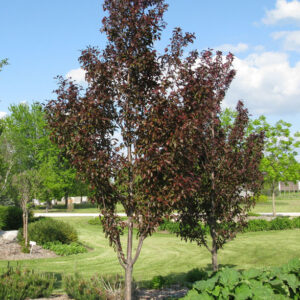Description
Liriodendron tulipifera / Tulip Tree
Planting Points: Tulip tree is named and noted for its cup-shaped, tulip-like flowers that bloom in spring. It has showy flowers that are yellow with an orange band at the base of each petal. Flowers of the tulip tree are used by insect pollinators. The tree is also a good habitat and food source for Sapsuckers, Songbirds, and small mammals. The trunks of tulip trees were used by Native Americans to make dugout canoes. The tulip tree is fast-growing and somewhat weak wooded, making them susceptible to limb breakage in high winds or from ice/snow.
Siting This Tree: The tulip tree is intolerant to salt spray and salty soils. The tulip tree’s fleshy root system prefers being transplanted in early spring, rather than autumn. A consistent supply of moisture is necessary for tulip trees and can suffer from leaf yellowing when planted in a dry site. Best planted in a park or yard as a shade tree with enough space for the large canopy at maturity.
Find an Authorized Dealer for our Tree Nursery in Iowa, Minnesota, or Wisconsin.





